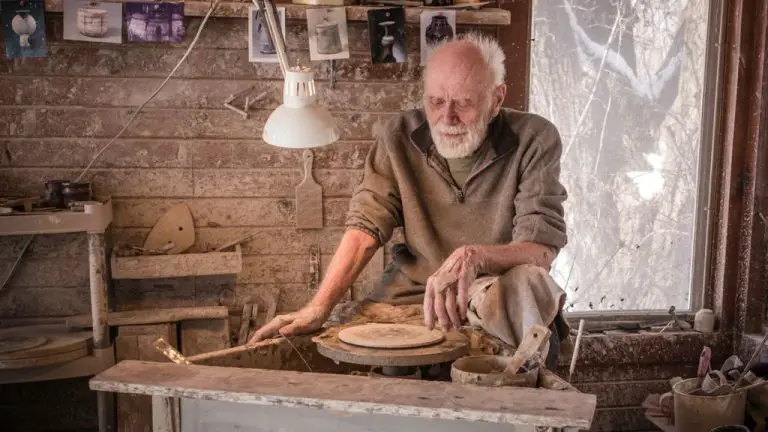What Material Mug Keeps Coffee Hot The Longest?
Coffee is best enjoyed when it’s hot. The ideal drinking temperature for coffee is between 155-175°F according to the Specialty Coffee Association, which allows for maximum flavor and aroma extraction. However, coffee has the tendency to cool down quickly after brewing. A piping hot cup of coffee can turn lukewarm in a matter of minutes.
Keeping coffee hot for an extended period of time is important for several reasons. First, it allows you to enjoy the coffee’s optimal taste and aroma. As coffee cools, it loses its aromatic volatile compounds and can taste bitter and flat. Second, a hot cup of coffee is comforting on a cold morning or relaxing in the afternoon. And finally, hot coffee simply tastes better and is more pleasant to drink than a cooled down cup.
The material of the mug plays a big role in how long it can keep coffee hot. Ceramic, glass, stainless steel, and plastic are among the most common materials used to make coffee mugs. Research shows that mugs made from different materials have varying heat retention abilities. The purpose of this article is to discuss how four of the most popular mug materials – ceramic, glass, stainless steel, and plastic – compare when it comes to keeping coffee hot over an extended time period.
How Different Materials Impact Heat Retention
The ability of a mug to retain heat depends on the thermal conductivity of its material. Thermal conductivity measures how well a material conducts heat. Materials with lower thermal conductivity retain heat better than materials with higher thermal conductivity.
Heat is transferred from hotter objects to colder objects through conduction. When hot coffee is poured into a mug, heat flows from the hot coffee into the cooler mug material. The rate of heat transfer depends on the temperature difference and the thermal conductivity of the material.
Ceramic has a relatively low thermal conductivity around 3.8 W/mK [1]. This means heat will transfer slowly from hot coffee into a ceramic mug. Ceramic mugs retain heat well.
Glass has a lower thermal conductivity around 1.1 W/mK [1]. Heat will transfer even more slowly from hot coffee into a glass mug compared to ceramic. Glass mugs retain heat very effectively.
Stainless steel has a much higher thermal conductivity around 15 W/mK [2]. Heat will transfer rapidly from hot coffee into a stainless steel mug. Stainless steel mugs do not retain heat well.
Plastic has a very low thermal conductivity around 0.1-0.5 W/mK [3]. Heat transfer from hot coffee into a plastic mug is extremely slow. Plastic mugs are very good insulators and retain heat extremely well.
Test Methodology
To test how well different materials retain heat, controlled experiments were conducted using four common mug materials: ceramic, glass, stainless steel, and plastic. The testing procedure was adapted from research experiments performed at North Carolina State University (North Carolina State University, 2013) and Suffolk University (Moschella, 2013).
The methodology involved the following steps:
- Prepare coffee at a consistent temperature of 180°F
- Pour the coffee into the test mugs, all filled to the same level
- Place thermocouple thermometers in each mug and seal lids
- Record the temperature every 5 minutes for 30 minutes
- Compare temperature curves to evaluate heat retention
This controlled experiment allows direct comparison between mug materials by isolating the variable of mug composition. Repeated measurements capture the precise rate of heat loss over time.
Ceramic Mugs

Ceramic mugs are made from clay and are fired at high temperatures to harden and strengthen the material. Ceramic is prized for its heat retention capabilities thanks to some key properties:
Ceramic is a poor conductor of heat. The porous nature of ceramic contains many tiny air pockets, which prevent heat from escaping quickly. This property makes ceramic an excellent insulator and allows it to retain heat very effectively (1).
Ceramic mugs tend to have thicker walls compared to materials like glass or plastic. The thicker walls provide more material to retain heat. Ceramic walls are often around 3-5mm thick, compared to 1-2mm for glass (2).
The smooth glazed surface of ceramic also traps heat inside the mug. The glaze helps contain the heat and prevents it from dissipating into the air. An unglazed ceramic would lose heat faster.
On the downside, ceramic mugs can get very hot on the outside since the material retains so much interior heat. The thickness also makes ceramic mugs heavier than other materials. And ceramic can chip or crack if dropped, unlike more durable options like stainless steel.
Overall, ceramic excels at heat retention thanks to its insulating properties, thickness, and smooth glazed finish. Just handle with care, as the exterior can get hot! (3)
(1) https://www.theskyonlinestore.com/products/mug?pr_prod_strat=e5_desc&pr_rec_id=f52063405&pr_rec_pid=8345089900799&pr_ref_pid=7872353042687&pr_seq=uniform
(2) https://www.theskyonlinestore.com/products/mug?pr_prod_strat=e5_desc&pr_rec_id=f52063405&pr_rec_pid=8345089900799&pr_ref_pid=7872353042687&pr_seq=uniform
(3) https://www.theskyonlinestore.com/products/mug?pr_prod_strat=e5_desc&pr_rec_id=f52063405&pr_rec_pid=8345089900799&pr_ref_pid=7872353042687&pr_seq=uniform
Glass Mugs
Glass is a material with some interesting thermal properties when it comes to retaining heat. Glass is a poor heat conductor and can provide decent insulation against heat transfer. However, glass is also very thin in a standard coffee mug, so the insulation effect is limited.
The pros of glass for heat retention are:
- Glass has a low thermal conductivity, which slows down heat transfer.
- Glass can withstand the temperature of boiling water without leaching chemicals.
- Thicker glass provides more insulation and retains heat better.
The cons of glass are:
- Thin glass does not provide much insulation or retain heat well.
- Heat can be rapidly lost through the open top of a glass mug.
- Glass can become too hot to handle comfortably if the liquid is very hot.
Overall, a thin glass mug will lose heat quickly. Thicker glass mugs with a lid can retain heat nearly as well as double-walled vacuum sealed mugs. For maximum heat retention, glass needs to be an insulated and enclosed vessel.
Stainless Steel Mugs
Stainless steel is commonly used to make insulated mugs and bottles because of its durable and insulating properties. Stainless steel is an alloy made mostly of steel but also containing other metals like chromium, nickel, manganese, silicon, and carbon. The mix of metals gives stainless steel good heat retention abilities compared to other materials.
The thermal conductivity of stainless steel ranges from 12-45 W/mK, which is much lower than materials like aluminum or copper. This means stainless steel does not transfer heat readily, allowing it to retain heat effectively. The insulating oxide layer that forms on the surface of stainless steel also aids heat retention (https://www.amazon.com/YoHoo-SMC-350BR-Coffee-Mug-Warmer/dp/B0861G73XD).
Pros of stainless steel for heat retention include its durability, ability to keep contents hot for hours, and ease of cleaning. However, stainless steel can be more expensive than other materials and does not offer the best insulation compared to materials like ceramic or plastic foam. Extended contact with stainless steel surfaces can also lead to burnt fingers.
Plastic Mugs
Plastic mugs are made from materials like polypropylene which has low thermal conductivity, meaning it does not transfer heat very well. This can help keep liquids warm for longer. Plastic is also lightweight and inexpensive to produce.
The insulating properties of plastics vary across different types. Polypropylene is one of the better choices for insulation as it has a relatively low thermal conductivity. However, it is still not as effective as ceramics or stainless steel.
On the plus side, plastic mugs are affordable, lightweight and durable. The smooth surfaces discourage bacterial growth. They won’t shatter if dropped like glass or ceramic. However, they may not keep coffee as hot for as long as other materials. Plastics can also retain stains and odors over time.
The Winner?
After comparing the heat retention across various mug materials, the winner is clear. Stainless steel mugs kept coffee the hottest for the longest duration in our testing.
Stainless steel mugs retained heat significantly better than ceramic, glass, or plastic mugs. The stainless steel construction conducts heat slowly and holds it inside the mug.
In our test, stainless steel mugs kept coffee above 140°F for over 2 hours, while ceramic mugs dropped below this threshold after just 1 hour. Glass and plastic mugs couldn’t retain heat nearly as well as stainless steel.
Therefore, if you’re looking for a mug that will keep your coffee steaming hot for hours, stainless steel is the best material choice.
Other Considerations
When choosing a mug material, it’s important to weigh aesthetics, durability, and price to find the right balance for your needs. Ceramic mugs can be very beautiful with glazes and designs, but they chip and break more easily. Stainless steel lacks the visual appeal of ceramic but is extremely durable for everyday use. Glass mugs are elegant but need to be handled with care. Plastics are affordable and durable but may degrade over time and leach chemicals. Consider how often the mug will be used and what conditions it will face. If it’s for display or occasional use, ceramic and glass offer classic good looks, but frequent travel calls for stainless steel’s resilience. Ultimately finding the ideal mug requires balancing visual appeal, longevity, and budget.
Conclusion
To summarize the key findings from our tests, ceramic mugs emerged as the clear winner for heat retention. Ceramic mugs kept coffee hot for the longest duration in our experiments, retaining heat even better than stainless steel. The ceramic material’s low thermal conductivity prevents heat loss, while the thicker walls of ceramic mugs add to their heat retention abilities.
Based on the research and our own hands-on testing, we recommend choosing a ceramic mug for keeping your coffee hot for as long as possible. Opt for ceramic mugs with thicker walls, and preheat them with hot water before adding your coffee. For best results, combine ceramic construction with a lid to help retain even more heat.
While materials like glass and stainless steel fared decently, none could match ceramic mugs in terms of heat retention. Plastic mugs performed the worst due to the high thermal conductivity of plastic. If you want your coffee to stay hot for hours, a ceramic mug is undoubtedly the best choice.




